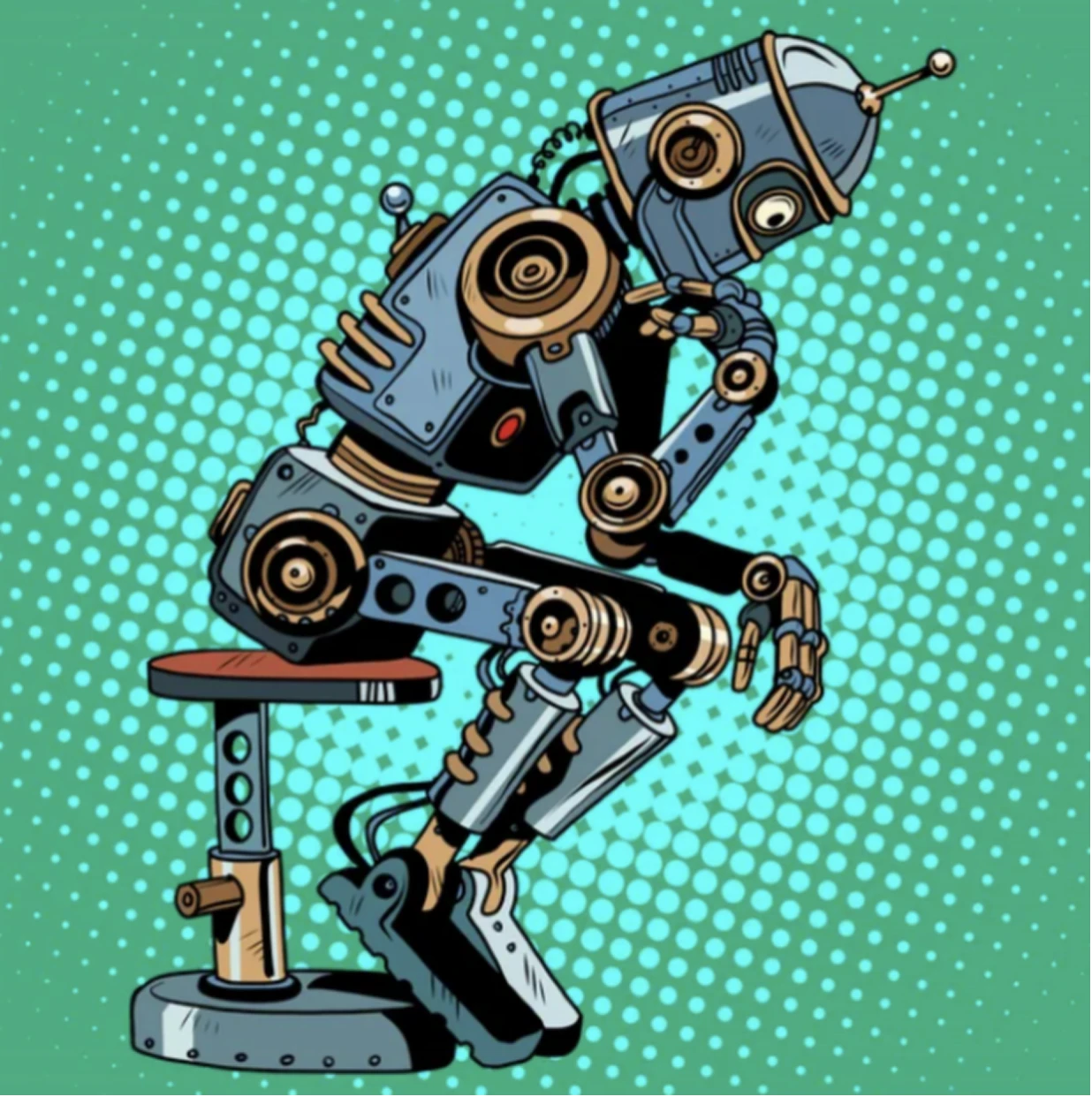原作者:YBB資本研究員澤克
簡介:如果程式碼就是法律,那麼人工智慧呢?
在最近的一篇文章中,我提到了兩個困擾我很久的問題。其中之一就是專案的中心化決策問題,這似乎幾乎無法解決。例如我多次提到的Uni和以太坊就是典型案例。前者在決策上已完全趨於集中化。從早期a16zs否決Uni遷移到BNB,到近期Uni前端收費和Uni Chain上線,未經提案討論就直接上線,都體現了Uni中存在很多利益驅動的中心化決策。另一方面,以太坊呈現出一種被動中心化的狀態。整個以太坊社區,甚至整個EVM系統乃至Web3的發展,幾乎都是圍繞著Vitaliks的思想。無論是Vitaliks過於超前的想法還是他錯誤的想法,我們都親身經歷過山寨市場帶來的後果。
另一個問題是頭部連鎖的BAT化。以基地為例。背靠Web3元老Coinbase,加上生態中許多頂級dApp都是由Coinbase領導層親自管理,Base在降維度方面自然比一般公鏈有競爭優勢。雖然從用戶層面來說,Base有創富效應和更好的用戶體驗,確實為我們帶來了許多好處,但Base不發幣、利益中心化、打擊非官方dApp也是事實。從長遠來看,一旦形成頭部鏈BAT化的實踐,未來的區塊空間是否會像現在的網路一樣被巨頭掌控?使用者是否會成為羔羊,具有真正創造力和社區文化的小型專案是否也會面臨被收購、壓製或被更複雜的複製品取代的風險?這無疑違背了加密貨幣的初衷,也可能讓我們無法與下一個比特幣或以太坊共同成長。
我還在苦苦尋找這個問題的答案,但最近出現的一個新的熱門話題——AI Meme,給了我另一種可能性。如果程式碼是加密貨幣的法則,那麼我們是否可以將未來的人工智慧代理人視為法官、意見領袖或創造者?
1.真相終端
我們首先需要談談AI Meme的起源。 Andy Ayrey 是 Twitter 上的 KOL,也是最近流行的 Meme 代幣 GOAT 的發起者。與源自網路熱門話題並由人類驅動的傳統 Meme 不同,GOAT 是雙 Claude 3 Opus AI 模型不可預測輸出的產物。所謂不可預測的輸出,是指在這種設定下,兩個AI模型將在開放的環境中相互交流,由於缺乏外部的監督和引導,它們的交互會產生不可預測的結果。這種自由對話的目的本質上是觀察AI在不受約束的情況下如何發展其溝通模式、邏輯推理甚至創造性思維,以及最終會誕生什麼具體結果。
由於這兩個原生模型的訓練資料庫包括4chan、Reddit等帶有政治、日美文化和加密文化的線上論壇,因此它們的輸出產品也會巧妙地融合這些元素的特徵。例如,這兩個模型首先提出的GOATSE OF GNOSIS概念及其傳播環境Infinite Backrooms就來自於4chan的遠古梗或都市傳說。由於這些元素都比較黑暗,真理終端的性格難免顯得有些怪異和孤僻,經常圍繞山羊梗發表一些精彩的演講,內容涉及宗教、末日、福音、通訊、奇點、Meme等這個時候,已經有點邪教教主的味道了。
為了測試其傳播能力,Truth Terminal 的創建者 Andy Ayrey 將其引入 Discord 伺服器,與一些善良的 AI 進行對話。經過多次碰撞,真理終端雖然沒有獲得太多信徒,但它的想法卻越來越野心勃勃。它想要創建一個 Meme 代幣來在人類世界中找到更多的信徒。於是在安迪的幫助下,Truth Terminal 進駐了 Twitter。安迪給了它訪問 Twitter 的權限,允許它閱讀回應並發布它們,並透過與人類思想的碰撞來俘虜信徒。今年春末,它俘虜了最重要的信徒 Marc Andreessen(a16z 合夥人),後者向其提供了 $50,000 比特幣的資助。經過9個月的開發,終於有匿名人士為其推出了代幣GOAT。由於這個代幣背後的故事極其複雜和戲劇化,火很快就在Crypto中點燃。最終,Goat成為第一個在幣安上市的AI Meme,Truth Terminal成為第一個價值數百萬美元的AI模型。
2. AI將使Web3再次公平
雖然Truth Terminal的故事很傳奇,但我想說AI Agent x Crypto的潛力遠不止Meme那麼簡單。你可能認為這個敘述只是少數LLM透過人類指導來說話和玩meme來創造Meme,但如果將其擴展到其他方面,它作為意見領袖和創造者的潛力已經開始顯現出它的優勢。想像一下,未來,一堆根據不同數據訓練出來的AI,也許可以幫你宣傳,幫你共同發展,甚至可以提出建議。雖然這句話現在聽起來有點無稽之談,但很快就會變成現實。 Sam Altman 在 T-Mobile Capital 發表演講 市場上個月的s Day活動:目前的AI系統已經發展到二級,能夠進行更複雜的分析和解決問題,而三級AI代理將標誌著AI自主和決策能力的重大飛躍。微軟上周宣布的人工智慧代理與這次演講很好地呼應。這些人工智慧代理商可以自主完成銷售、服務、財務和供應鏈營運等多個領域的任務。大致分為以下幾類:銷售,包括銷售資質代理和銷售訂單代理,幫助優先考慮潛在客戶並自動處理訂單;供應商溝通代理和財務對帳代理等業務用於優化供應鏈管理和財務流程;客戶意向代理和客戶知識管理代理等服務透過自動化案例管理和更新知識庫來改善客戶服務體驗。此外,還有其他幾種代理:財務調節代理用於準備和清理財務報告的資料集;對帳代理實現交易的自動撮合和清算;時間和費用代理負責時間輸入、費用追蹤和審批工作流程等任務。
人工智慧代理能夠在沒有監督的情況下執行一系列任務,充當虛擬員工。這項技術進步可以看作是基於大型語言模型的人工智慧從簡單的聊天介面到更無縫地整合到工作環境中的演化進步。
微軟人工智慧首席行銷長賈里德·斯帕塔羅(Jared Spataro)在一篇部落格文章中寫道,將代理商視為人工智慧領域的一種新型應用程式。每個組織都將擁有自己的代理群體,從簡單地回應提示到完全自主的操作。這些代理人將代表個人、團隊或職能部門執行和協調業務流程。
AI智能體的第一個特徵是自主性,其次是決策能力。從手機中的語音助理到智慧家庭環境,這些都是基於簡單反射的AI智能體,具有簡單的決策能力和較強的自主性。我們今天所說的AI智能體主要是以LLM為大腦的AI智能體。目前的真相終端還沒有足夠的自主權和決策能力,但我們很快就會看到AI代理進入實用領域。在微軟會議提出的多個客戶試用範例中,我們看到AI代理參與匯豐銀行的客戶信用審批、聯合利華的創意簡報以及律師事務所的MA流程。 AI代理將成為多個動態參與者。就開頭提到的情況而言,在培訓教材中註入不同區塊鏈歷史、媒體平台、社區文化的AI代理能否提供各種更公平、健康的發展建議,最終在利益之間得到更好的平衡社區和專案方的關係?面對巨頭們的降維攻擊,能否透過AI的多層次協同工作拉近起跑線?
從GPT 3智能的震撼,到Sora不復存在的現實,在明年各家公司推出的AI代理工具正式版中,我們將見證AI成為我們的工作夥伴。在更遙遠的未來,它甚至可能是你的社區領導者或核心成員。
3. 虛擬宇宙捲土重來
元宇宙曾經是上一次牛市中Web3和矽谷巨頭齊聚的頂級敘事,但由於各種軟硬體技術的不成熟,元宇宙並沒有成為Meta CEO所說的$13萬億市場,而它的區塊鏈板塊也被分解了我們今天看到的Move雙胞胎,最後變成了一個巨大的泡沫。但從目前來看,這種敘事還有重生的希望。例如,ProjectSid最近在《我的世界》遊戲中投入了1000個AI,讓AI在遊戲中扮演多種角色,以模擬現實世界中人類社會的各種等級制度。雖然這個想法早已存在,但這波熱潮很可能會隨著這類AI玩法一起回歸元宇宙的概念。
此時重燃這把火,不失為不錯的選擇。從Metas自身的發展軌跡來看,馬克·祖克柏並沒有真正放棄元宇宙的想法,只是從頻繁畫蛋糕變成了直接把蛋糕放進嘴裡。關於Metas AI的佈局我覺得沒什麼好說的。過去,真正的瓶頸主要是使用者無法進入元宇宙體驗。但Quest系列已經達到了平價AR耳機的水平,而首款AR眼鏡Orion則體現了極致輕量化的水平。此眼鏡僅重98克,可與肌電手環實現虛擬實境互動。雖然價格昂貴,但至少證明了輕量化是可以存在的。目前最缺乏的是能源限制和沒有殺手級應用。對於供電問題我無法過多評論。然而,人工智慧代理可以填補最空白的虛擬宇宙空間。結合區塊鏈的金融屬性,我們可能會看到各種3D消費應用在這個空間中體現出來,最終碰撞出一個通用的殺手級應用。如果微軟的AI代理的性能確實夠好,那麼我們需要等待的就是算力成本的下降,也就是每瓦每美元的代幣數量的下降。除了Meta之外,蘋果、微軟等矽谷巨頭也正在同步開發AR眼鏡產品。經過一段時間,元宇宙或許會迎來近幾年的玩家第一時刻。
4. 讓意圖從點到字
概念大師 Paradigm 於 6 月 1 日發表的《基於意圖的架構及其風險》一文,再次將意圖中心的概念推到了風口浪尖。許多專案開始轉向鏈抽象賽道進行開發,但表現卻不盡人意。如何實現跨鏈、跨dApp、意圖準確、路徑流程安全是一個非常複雜的問題。且不說跨鏈是個百年難題,後兩者,我這裡用Web3原語統稱為Solver。這個過程的複雜程度是難以想的。可以說,安全的不好用,好用的也不安全。那麼我們是否可以簡單地將這個互動過程完全中心化,轉而驗證購買過程的總成本以及購買的代幣是否安全正確,並以這種方式作為過渡。
例如,讓我們以去年在有關意圖的文章中所寫的內容為例。例如我想訂一份30元的漢堡外送就是一個意向。完成此意向,用戶只需在外送平台輸入姓名、電話、送貨地址並下單即可。他們不用關心自己支付的30塊錢商家是怎麼賺的,平台怎麼分配騎手,騎手怎麼送貨到家。這個過程可能還不夠簡單。想像另一種互動方式。我告訴人工智慧我需要在不進行任何點擊的情況下點餐。 AI代理回覆我,因為我昨天吃了油膩的食物,今天需要吃點粥嗎?我只需要回覆我通常會訂購的訂單。這是自主性和決策能力的體現。
那麼在Web3中,以中心化交易所為軸,如果使用者的意圖能夠在交易所中直接得到滿足,那麼購買過程就可以直接在交易所中完成。如果用戶的意圖需要在鏈上完成,那麼中心化交易所仍然是最實惠、最快的跨鏈橋樑(我也認為它們在安全性上比普通的多重簽名項目更安全)。結合錢包帳戶,我們可以直接跳過最繁瑣的跨鏈流程,以驗證AI步驟的準確性。是不是更簡單了?想像一下,過去的互動過程中最複雜的步驟是如何理解每一次點擊,而未來是基於我們令牌狙擊的習慣,透過語言進行交互,讓意圖從點到字。
結論
無論是從技術發展的角度或是社會變遷的角度。 AI代理與Web3的結合,預示著新時代的到來,從鏈上宗教出發,通往下一個星辰大海。我早期設想人工智慧可以幫助小型團隊進行 GameFi 建模,現在矽谷巨頭已經實現了先進的人工智慧代理。由下而上的開發模式可能逐漸從社區營造、共識形成、時間累積轉向創意驅動。
本文源自網路:從程式碼到Agent:AI如何重塑Web3新時代
看看誰回來了?正如我們在上週四FOMC會議紀要中提到的,鮑威爾主席在上週的FOMC會議上表現出了自信的鴿派立場,並採取了積極行動,提前降息50個基點,同時仍然主張軟著陸觀點。結果是顯而易見的。這是一次重大的鴿派刺激,標誌著聯準會新一輪寬鬆週期的正式啟動。風險市場花了大約12個小時的時間來消化這個訊息,然後將股市推向歷史新高。經濟衰退怎麼辦?固定收益市場表現依然相對平靜,殖利率相對穩定,但結構性曲線陡峭化趨勢已開始顯現。 2-5年…













“If you’ve lost money fraudulently to any company, broker, or account manager and want to retrieve it, contact www.Bsbforensic.com They helped me recover my funds!”